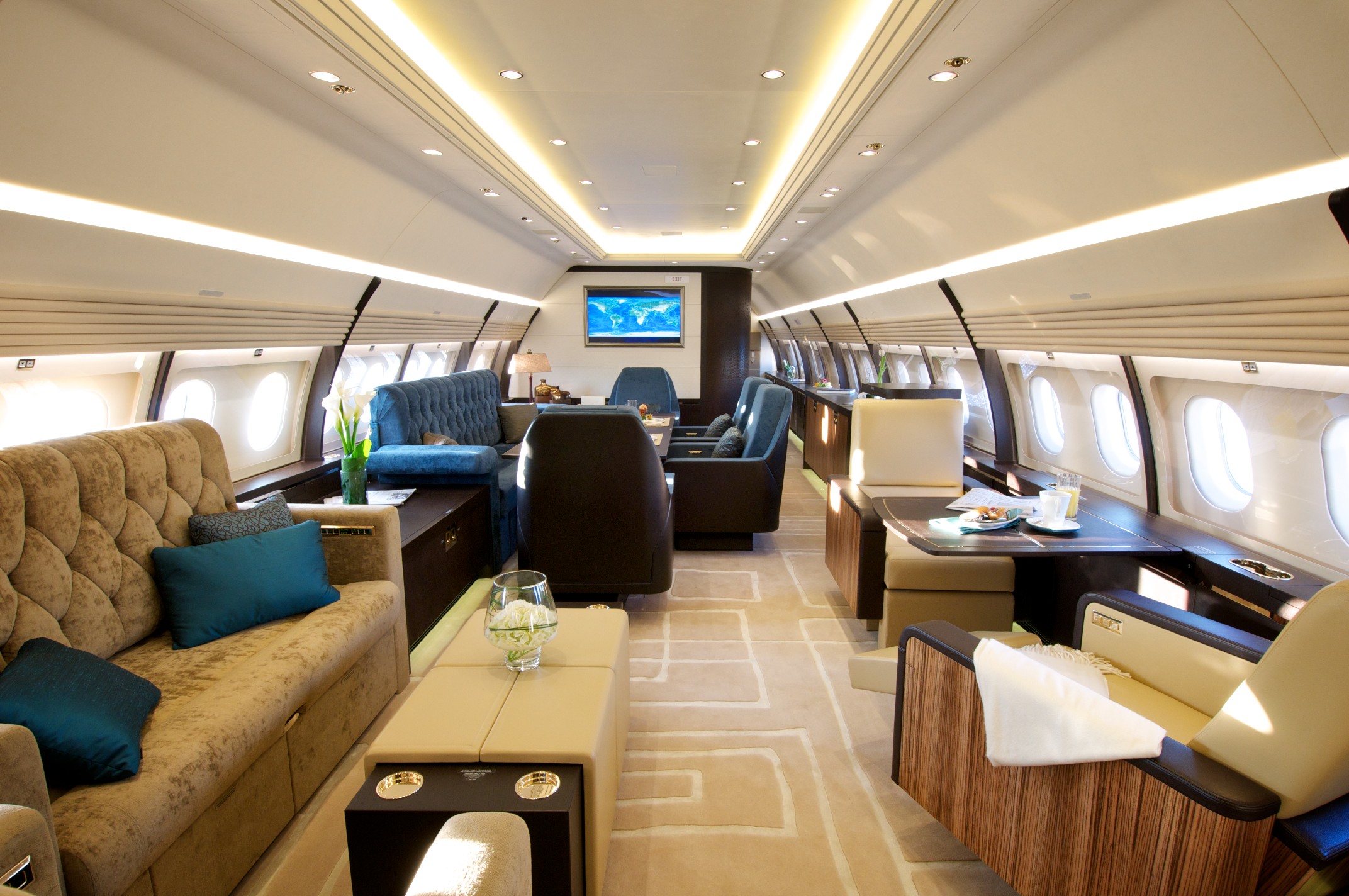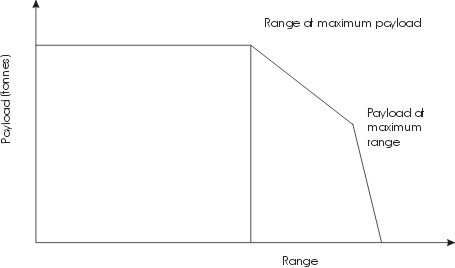|
BBJ1
Boeing Business Jets (BBJ) are versions of Boeing's jet airliners with modifications to serve the private, head of state and corporate jet market. In 1996, Phil Condit, president of The Boeing Company, and Jack Welch, chairman and CEO of General Electric, sketched out their ideal business jet– a high-performance derivative of the 737 Next Generation, capable of flying more than 6,000 nautical miles nonstop and offering more cabin space than traditional long-range business jets. The first BBJ, based on the 737-700, rolled out on July 26, 1998 and had its first flight Sept. 4, 1998. Boeing expanded the BBJ brand to include configurations based on the 737 MAX, 777, 777X, 787 Dreamliner and 747-8 Intercontinental, which are known as BBJ 737 MAX, BBJ 777, BBJ 777X, BBJ 787, and BBJ 747-8, respectively. Boeing currently produces the BBJ 737-7, BBJ 737-8, BBJ 737-9, BBJ 787-8, and BBJ 787-9. The BBJ 777X will be available once it is certified by the FAA. Sought by VVIP customers a ... [...More Info...] [...Related Items...] OR: [Wikipedia] [Google] [Baidu] |
Boeing 737 Next Generation
The Boeing 737 Next Generation, commonly abbreviated as 737NG, or 737 Next Gen, is a narrow-body aircraft powered by Twinjet, two jet engines and produced by Boeing Commercial Airplanes. Launched in 1993 as the third generation derivative of the Boeing 737, it has been produced since 1997 and is an upgrade of the Boeing 737 Classic, 737 Classic (−300/-400/-500) series. It has a redesigned wing with a larger area, a wider wingspan, greater fuel capacity, and higher maximum takeoff weights (MTOW) and longer range. It has CFM International CFM56#CFM56-7 series, CFM International CFM56-7 series engines, a glass cockpit, and upgraded and redesigned interior configurations. The series includes four variants, the −600/-700/-800/-900, seating between 108 and 215 passengers. The 737NG's primary Competition between Airbus and Boeing, competition is the Airbus A320 family. , a total of 7,124 737NG aircraft had been ordered, of which 7,096 had been delivered, with remaining orders for ... [...More Info...] [...Related Items...] OR: [Wikipedia] [Google] [Baidu] |
Airbus Corporate Jets
Airbus Corporate Jets, a business unit of Airbus SAS and part of Airbus, markets and completes corporate jet variants from the parent's airliner range. Types include the A318 Elite to the double/triple-decked Airbus A380 Prestige. Following the entry of the 737 based Boeing Business Jet, Airbus joined the business jet market with the A319 Corporate Jet in 1997. Although the term Airbus Corporate jet was initially used only for the A319CJ, it is now often used for all models, including the VIP widebodies. As of June 2019, 213 corporate and private jets are operating; 222 aircraft have been ordered, including A320 family jets. An Airbus Corporate Jet Centre is based at Toulouse, France, and specialises in single-aisle aircraft. Narrow-body aircraft The ACJ family is based on the successful A320 family of aircraft, beginning with the A319CJ. Today any version of the A320 is available as corporate jet with 180 minute ETOPS rating. Changes over the passenger versions include an inc ... [...More Info...] [...Related Items...] OR: [Wikipedia] [Google] [Baidu] |
Embraer Lineage
The Embraer Lineage 1000 is a variant of the Embraer 190 regional jet airliner, launched as a private jet on May 2, 2006. Manufactured by the Brazilian aerospace firm Embraer, the Lineage is advertised as an "ultra-large" business jet with comfortable seating for 19. Design The Lineage 1000 is based on the Embraer 190 airliner, with added fuel tanks in the lower deck cargo hold space, nearly doubling the jet's range. It boasts a lavish interior, divided into up to five sections including an optional bedroom, a washroom with running water, and a walk-in cargo area at the rear. Its fuselage cross-section is larger than similarly priced business jets like the $50.4M Global 5000, $53.8M Falcon 7X or $54.5M Gulfstream G600, but smaller than other airliner conversions; the Boeing 737-700 based BBJ1 costing $71.4M or Airbus A319 based ACJ319 costing $87.0M. Development The Lineage 1000 received its certification from Brazil's ANAC and from EASA in December 2008. It was certifie ... [...More Info...] [...Related Items...] OR: [Wikipedia] [Google] [Baidu] |
WikiProject Aircraft
A WikiProject, or Wikiproject, is a Wikimedia movement affinity group for contributors with shared goals. WikiProjects are prevalent within the largest wiki, Wikipedia, and exist to varying degrees within sister projects such as Wiktionary, Wikiquote, Wikidata, and Wikisource. They also exist in different languages, and translation of articles is a form of their collaboration. During the COVID-19 pandemic, CBS News noted the role of Wikipedia's WikiProject Medicine in maintaining the accuracy of articles related to the disease. Another WikiProject that has drawn attention is WikiProject Women Scientists, which was profiled by '' Smithsonian'' for its efforts to improve coverage of women scientists which the profile noted had "helped increase the number of female scientists on Wikipedia from around 1,600 to over 5,000". On Wikipedia Some Wikipedia WikiProjects are substantial enough to engage in cooperative activities with outside organizations relevant to the field at issue. For e ... [...More Info...] [...Related Items...] OR: [Wikipedia] [Google] [Baidu] |
Operating Empty Weight
Empty weight (EW) is the sum of the ‘as built’ manufacturer's empty weight (MEW), plus any standard items (SI) plus any operator items (OI), EW = MEW + SI + OI. The EW is calculated for each aircraft series and each unique configuration of an aircraft and is confirmed by periodically weighing it. The "Operating empty weight" (OEW) is the sum of the empty weight and the crew plus their baggage. Standard items include all structural modification or configuration orders that may have altered the MEW, including all fluids necessary for operation such as engine oil, engine coolant, water, hydraulic fluid and unusable fuel. Operator items include fixed, optional equipment added by the operator for service reasons. The weight added to the aircraft above its OEW for a given flight is variable and includes fuel for the flight and the cargo. Cargo depends upon the type of aircraft; i.e., passengers plus baggage for a transport or commuter airplane, materiel for a cargo airplane, stores ... [...More Info...] [...Related Items...] OR: [Wikipedia] [Google] [Baidu] |
Maximum Takeoff Weight
The maximum takeoff weight (MTOW) or maximum gross takeoff weight (MGTOW) or maximum takeoff mass (MTOM) of an aircraft is the maximum weight at which the pilot is allowed to attempt to take off, due to structural or other limits. The analogous term for rockets is gross lift-off mass, or GLOW. MTOW is usually specified in units of kilograms or pounds. MTOW is the heaviest weight at which the aircraft has been shown to meet all the airworthiness requirements applicable to it. MTOW of an aircraft is fixed and does not vary with altitude, air temperature, or the length of the runway to be used for takeoff or landing. Maximum permissible takeoff weight or "regulated takeoff weight", varies according to flap setting, altitude, air temperature, length of runway and other factors. It is different from one takeoff to the next, but can never be higher than the MTOW. Certification standards Certification standards applicable to the airworthiness of an aircraft contain many requirements ... [...More Info...] [...Related Items...] OR: [Wikipedia] [Google] [Baidu] |
Payload
Payload is the object or the entity which is being carried by an aircraft or launch vehicle. Sometimes payload also refers to the carrying capacity of an aircraft or launch vehicle, usually measured in terms of weight. Depending on the nature of the flight or mission, the payload of a vehicle may include cargo, passengers, flight crew, munitions, scientific instruments or experiments, or other equipment. Extra fuel, when optionally carried, is also considered part of the payload. In a commercial context (i.e., an airline or air freight carrier), payload may refer only to revenue-generating cargo or paying passengers. A payload of ordnance carried by a combat aircraft is sometimes alternatively referred to as the aircraft's warload. For a rocket, the payload can be a satellite, space probe, or spacecraft carrying humans, animals, or cargo. For a ballistic missile, the payload is one or more warheads and related systems; their total weight is referred to as the throw-weight. Th ... [...More Info...] [...Related Items...] OR: [Wikipedia] [Google] [Baidu] |
CFM International LEAP
The CFM International LEAP ("Leading Edge Aviation Propulsion") is a high-bypass turbofan engine produced by CFM International, a 50–50 joint venture between American GE Aviation and French Safran Aircraft Engines (formerly Snecma). It is the successor of the successful CFM56 and competes with the Pratt & Whitney PW1000G to power narrow-body aircraft. Design The LEAP's basic architecture includes a scaled-down version of Safran's low pressure turbine used on the General Electric GEnx, GEnx engine. The fan has flexible blades manufactured by a Out of autoclave composite manufacturing, resin transfer molding process, which are designed to untwist as the fan's rotational speed increases. While the LEAP is designed to operate at a higher pressure than the CFM56 (which is partly why it is more efficient), CFM plans to set the operating pressure lower than the maximum to maximize the engine's service life and reliability. Currently proposed for the LEAP is a greater use of composite ... [...More Info...] [...Related Items...] OR: [Wikipedia] [Google] [Baidu] |
Manufacturer's Empty Weight
In aviation, manufacturer's empty weight (MEW) (also known as manufacturer's weight empty (MWE)) is the weight of the aircraft "as built" and includes the weight of the structure, power plant, furnishings, installations, systems, and other equipment that are considered an integral part of an aircraft before additional operator items are added for operation. ''Basic aircraft empty weight'' is essentially the same and excludes any baggage, passengers, or usable fuel. Some manufacturers define this empty weight as including optional equipment, i.e. GPS units, cargo baskets, or spotlights. Specification MEW This is the MEW quoted in the manufacturer's standard specification documents and is the aircraft standard basic dry weight upon which all other standard specifications and aircraft performance are based by the manufacturer. The Specification MEW includes the weight of:Torenbeek, Egbert. ''Synthesis of Subsonic Airplane Design''. Delft University Press. . * Airframe structure � ... [...More Info...] [...Related Items...] OR: [Wikipedia] [Google] [Baidu] |
Gulfstream G650
The Gulfstream G650 is a large business jet produced by Gulfstream Aerospace."Gulfstream Introduces the All-New Gulfstream G650" . Gulfstream, March 13, 2008. The model is designated ''Gulfstream GVI'' in its , and may be configured to carry from 11 to 18 passengers. Gulfstream began the G650 program in 2005 and revealed it to the public in 2008. The G650 was formerly the company's largest and fastest business jet with a top speed of Mach 0.925, having been surpassed by the larger G700. The aircraft project was named the 2014 winner of the [...More Info...] [...Related Items...] OR: [Wikipedia] [Google] [Baidu] |
B787
The Boeing 787 Dreamliner is an American wide-body jet airliner developed and manufactured by Boeing Commercial Airplanes. After dropping its unconventional Sonic Cruiser project, Boeing announced the conventional 7E7 on January 29, 2003, which focused largely on efficiency. The program was launched on April 26, 2004, with an order for 50 aircraft from All Nippon Airways (ANA), targeting a 2008 introduction. On July 8, 2007, a prototype 787 was rolled out without major operating systems, and then the aircraft experienced multiple delays until its maiden flight on December 15, 2009. Type certification was received in August 2011 and the first 787-8 was delivered in September 2011 before entering commercial service on October 26, 2011, with ANA. At launch, Boeing targeted the 787 with 20% less fuel burn than replaced aircraft like the Boeing 767, carrying 200 to 300 passengers on point-to-point routes up to , a shift from hub-and-spoke travel. The twinjet is powered by G ... [...More Info...] [...Related Items...] OR: [Wikipedia] [Google] [Baidu] |

.jpg)




.jpg)